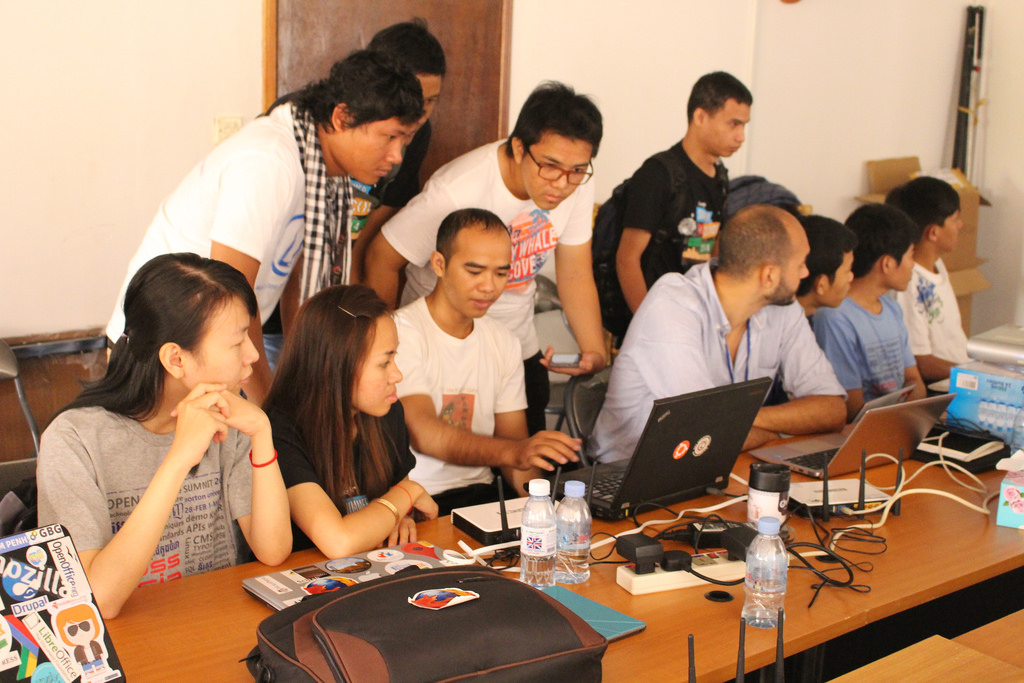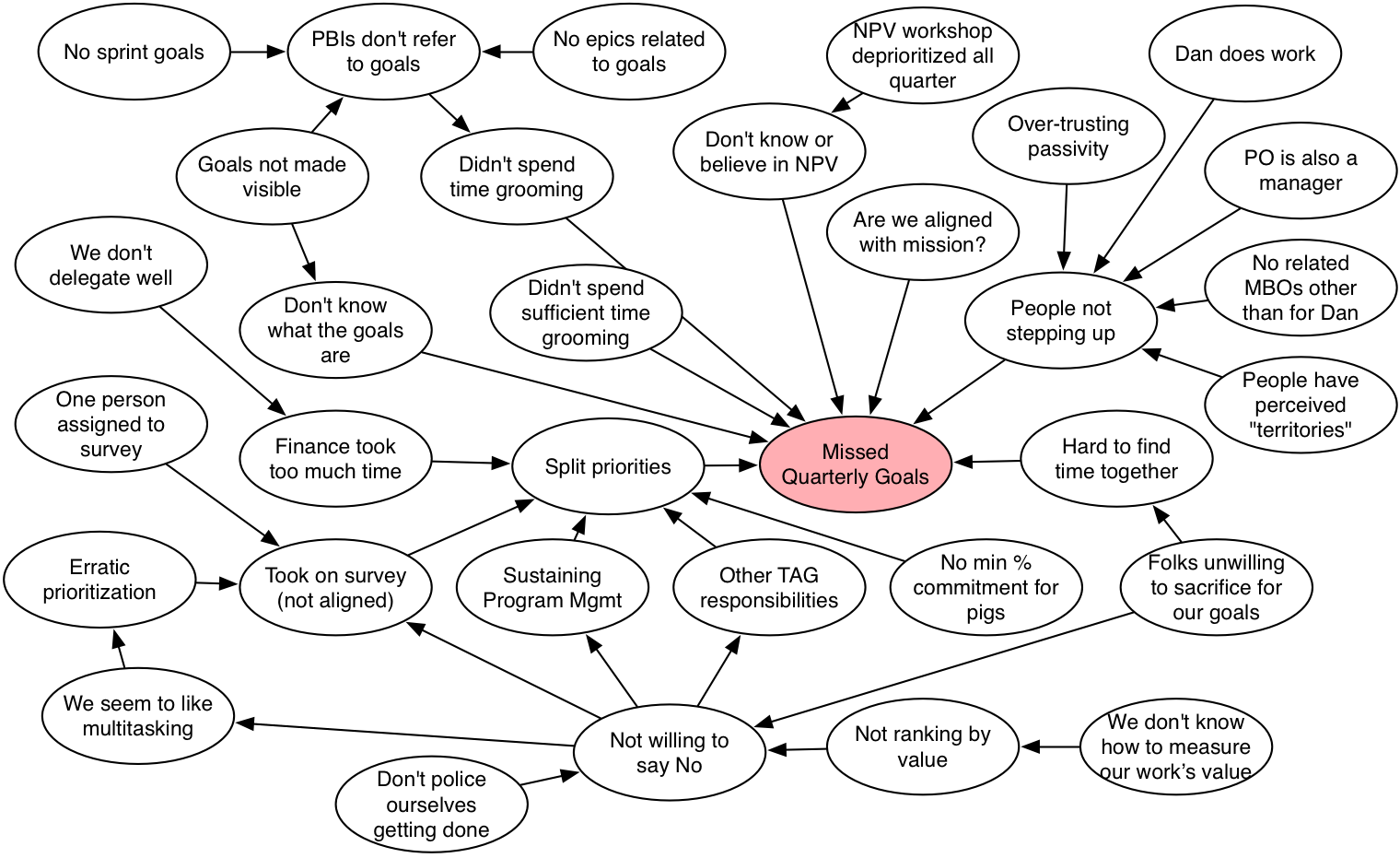-

Align to a Driving Purpose
People are working. Their efforts should produce something important. But… Unfocused activities produce poor results
-

Agility Context: We have a goal requiring creative effort. We want to succeed. Overplanning increases risk … When embarking on a creative project, success seems certain. We plan optimistically, and then almost immediately after we start, delays and challenges emerge. The plan and likely outcome keep diverging. We become more realistic. We double down on…
-

Fix Systemic Problems
Context: When unimpeded by outside forces, we rapidly adapt to circumstances and succeed, but this perfect independence rarely exists. Problem: External factors limit our flow … We don’t have the knowledge, specialty resources, elasticity or authorization to do everything ourselves, but relying on others puts us at risk.
-

Limit Work in Progress
Context: We measure progress and experiment with processes and products. However, experiments can take a long time, and failures can have huge costs. We have a lot of balls in the air, a lot of inventory to sell, and a lot of great stuff that isn’t quite done yet. We have a problem … We adapt…
-

Chunk Before Choosing
Creative people with limited resources, such as product managers, developers, CEOs, investors and artists, must choose which items to assess, staff or fund. They compare value, cost, flexibility and risk to make a decision. Faced with too many options, we choose badly …
-

Experiment to improve
Context: Plenty of data informs us. We can forecast when things will happen. Our progress metrics are aligned with long term goals. But externalities impede our progress: competitors emerge, delays harm us. We are passive victims of outside circumstance. Passivity until risks are revealed can be too late … We suspect unknown dangers, economic loss, and growing ineffectiveness. Our…
-

Embrace Collective Responsibility
Context: It takes us time to decide to fix problems, and we let some problems fester because we don’t want to get anywhere near them. When we are on a team, we can blame someone or something else for a problem, and often do. We might blame our own permanent flaws for a problem, feeling guilty. None of…
-

Root Cause Mapping Party
Creative organizations, teams and leaders often encounter problems, as they explore new frontiers. In solving a problem, our biases can lead to a dysfunctional “fix”… Completing a task may involve many people and many steps. If it fails, we often focus on the last people involved or the last steps taken (Availability Heuristic). If we don’t look…
-

Measure Progress with Leading Indicators
Context: We can study others who succeed, imitate their activities and gain their skills. But these activities create nothing new. Once we have reached their capabilities, how do we know if we’ve improved? Completion metrics distract us from incremental improvement …
